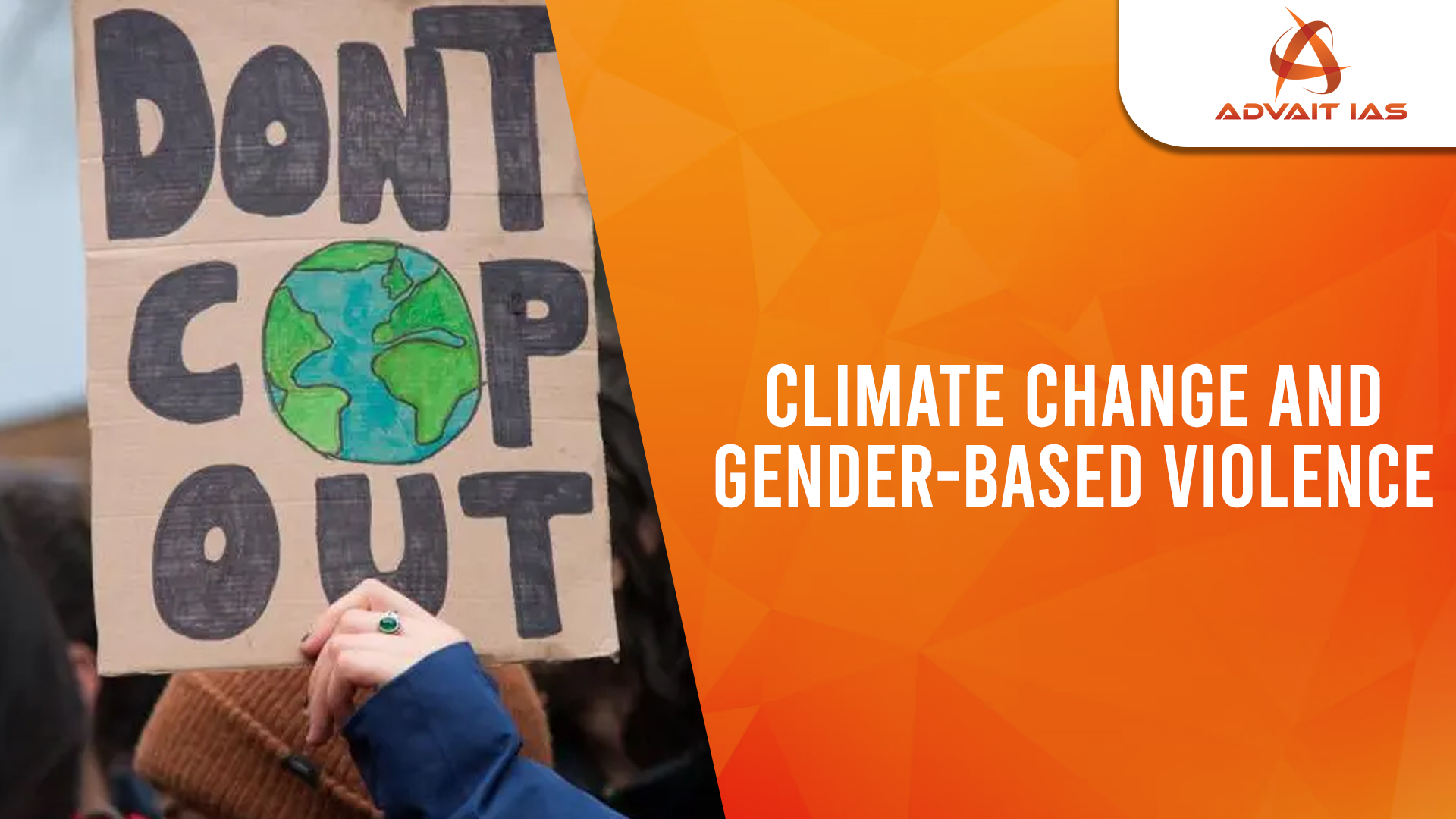A UN Spotlight Initiative report highlights rising gender-based violence (GBV) against women due to climate change.
- Prediction: By 2100, 1 in 10 intimate partner violence (IPV) cases may be climate-related without urgent interventions.
UN Spotlight Initiative
- A global, multi-year partnership between the European Union (EU) and United Nations (UN).
- Objective: Eliminate all forms of violence against women and girls (VAWG).
Key Findings of the UN Report
1. Climate Change Increasing GBV
- Every 1°C rise in temperature → 7% increase in intimate partner violence (IPV).
- Projections:
- At 2°C warming → 40 million more women and girls may face IPV annually by 2090.
- 3.5°C warming → Cases more than double.
- Limiting warming to 1.5°C → IPV rates could fall from 24% to 14% by 2060.
2. Disaster-Induced Violence and Underreporting
- In 2023:
- 1 million people faced climate disasters.
- 423 million women experienced IPV.
- Disasters increase:
- Femicide (28% rise during heatwaves).
- Child marriage, human trafficking, and sexual exploitation post floods, droughts, and displacement.
- Shadow Pandemic:
- 1 in 3 women globally face physical, sexual, or psychological abuse.
- Only 7% survivors report the incidents (source: UN Spotlight Report).
3. Vulnerable Groups at Higher GBV Risk
- Women:
- Living in poverty, informal settlements, agriculture
- From Indigenous communities, disabilities, elderly, and LGBTQ+
- Women environmental defenders face harassment, violence, abductions, and murders.
4. Gender-Climate Funding Gap
- Only 04% of climate-related development assistance focuses primarily on gender equality.
- Highlights a critical failure to integrate GBV issues into climate action.
Key Recommendations of the UN Report
1. Integrate GBV into Climate Policy
- Make GBV prevention a part of climate policies at local, national, and global levels.
- Substantially increase gender-focused climate funding.
2. Prioritize Women’s Safety and Leadership
- Women as leaders and beneficiaries in climate solutions.
- Recognize GBV as a barrier to climate resilience.
- Strengthen civil society and women’s organizations (e.g., Pacific Feminist Community of Practice).
- Advocate for gender justice in global forums like COP27.
3. Adopt International Best Practices
- Examples:
- Vanuatu, Liberia, Mozambique linking gender justice with climate resilience.
- Innovative measures:
- Retraining former FGM practitioners in climate-smart agriculture.
- Embedding GBV services in disaster response programs.
- Deploying mobile health clinics in climate-affected zones.
Measures that can be adopted to minimize the impact on Women:
- Mainstream gender considerations in all climate projects.
- Strengthen social protection schemes for vulnerable women.
- Increase investment in climate-resilient infrastructure (early warning systems, safe shelters).
- Promote education, legal awareness, and economic empowerment.
- Expand community-based GBV response systems in climate-affected regions.
- Encourage women’s participation in climate policy formulation and leadership roles.
The climate crisis is a gendered crisis. UN findings call for urgent integration of gender equity and violence prevention into climate strategies. For India and the global community:
- Policy frameworks must be inclusive, responsive, and rights-centered.
- Only then can we achieve a climate-resilient, just, and safe future for all.






